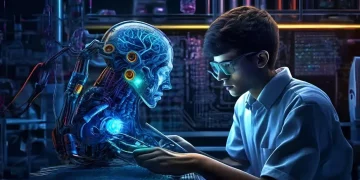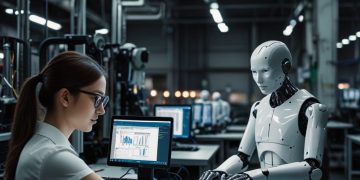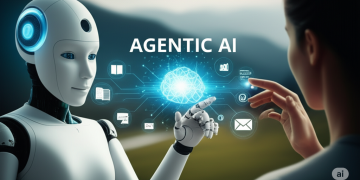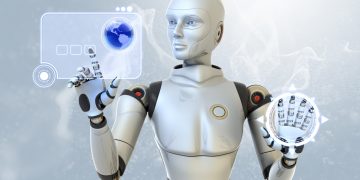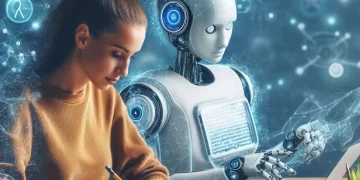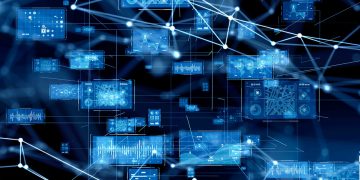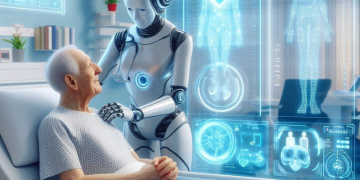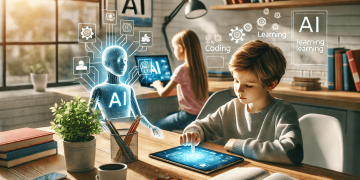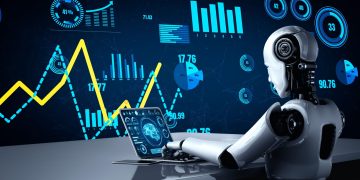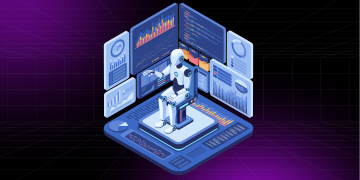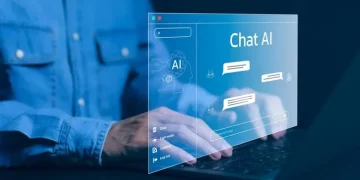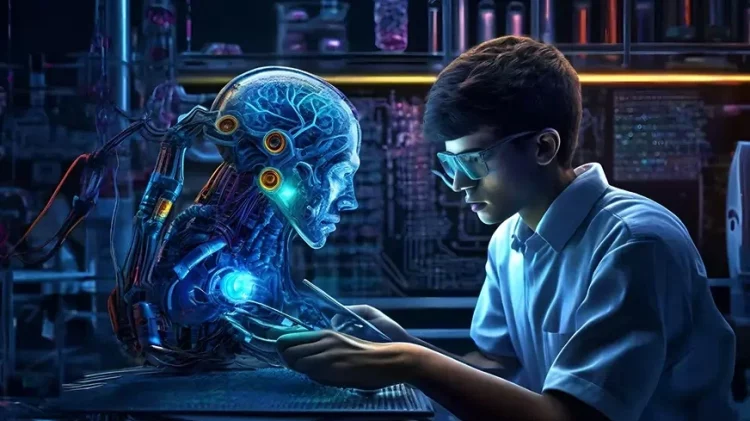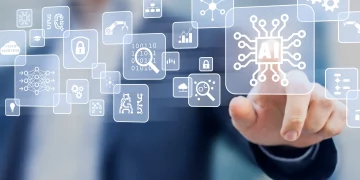Introduction
Generative Artificial Intelligence (Generative AI) is one of the most transformative technological advancements in modern times. From creating realistic images and music to writing poetry and coding software, generative models are demonstrating the vast potential of machine learning and neural networks. At the intersection of creativity and computational power, generative AI is rapidly evolving and reshaping industries across the globe.
This article explores the rapid development of generative AI, its foundational technologies, practical applications, ethical considerations, and the challenges it faces as it grows. It aims to provide a comprehensive, in-depth understanding of the current state of generative AI and its potential future trajectory.
1. What is Generative Artificial Intelligence?
Generative AI refers to a class of artificial intelligence models designed to create new content or data that closely resembles real-world data. Unlike traditional AI models that focus on classification or prediction tasks, generative models are trained to understand the underlying patterns in data and generate new, similar outputs. These models are capable of creating text, images, videos, music, and more, all based on the data they were trained on.
At the core of generative AI are advanced machine learning techniques, particularly Generative Adversarial Networks (GANs) and variational autoencoders (VAEs). GANs, introduced by Ian Goodfellow in 2014, involve two networks: a generator that creates fake data and a discriminator that tries to distinguish between real and fake data. The two networks compete in a zero-sum game, with the generator improving over time to produce more realistic outputs.
Key Components of Generative AI:
- Deep Learning: Deep neural networks, particularly convolutional neural networks (CNNs) and recurrent neural networks (RNNs), are often employed in the development of generative models.
- Data Representation: Effective data representation is crucial for the generation of high-quality outputs. Models learn to encode and decode information about the data, such as the pixels of an image or the syntax of a sentence.
- Training: Generative models are trained on large datasets, often requiring significant computational resources. During training, the model iteratively improves its ability to generate realistic outputs.
2. The Evolution of Generative AI
The development of generative AI has occurred in stages, with several breakthroughs significantly enhancing the quality and capabilities of these models.
Early Developments:
In the early 2000s, AI research was primarily focused on supervised learning and classification. While these models were successful at pattern recognition and data analysis, their creative capabilities were limited. The introduction of unsupervised learning techniques in the mid-2010s laid the foundation for generative models.
Breakthroughs in 2014:
Generative AI gained significant attention in 2014 with the introduction of Generative Adversarial Networks (GANs) by Ian Goodfellow. GANs proved to be particularly effective in generating highly realistic images, marking a milestone in AI’s ability to create original content. This technology spurred the development of new generative models, such as VAEs and transformers, further expanding the scope of creative tasks AI could perform.
Recent Advancements:
In recent years, the field has seen the introduction of GPT-3 by OpenAI, a language model capable of generating human-like text, and DALL·E for generating images from textual descriptions. These models demonstrate the power of generative AI to produce complex and high-quality content in domains that were once exclusively human domains.
3. Applications of Generative AI
Generative AI has a wide array of applications across various industries, including entertainment, healthcare, finance, marketing, and more. The technology is pushing boundaries and opening new doors for innovation.
Creative Industries:
In the realm of the arts, generative AI has become a powerful tool for artists, designers, and musicians. Models like DeepDream and Artbreeder allow users to create unique and visually striking images, often blending styles in new and unexpected ways. AI-generated music and poetry are also gaining traction, with platforms like Aiva composing original symphonies and AI-generated literature gaining recognition in literary circles.
Entertainment:
In film and television, AI is being used to generate realistic visual effects, enhance animation, and even create entire scenes from scratch. For instance, in the creation of special effects for movies, AI models can generate realistic simulations of environments, lighting, and character animations that require less manual labor and computational resources.
Healthcare:
Generative AI has made strides in healthcare by aiding in drug discovery, medical imaging, and personalized medicine. AI models can generate realistic 3D models of organs, helping doctors with pre-surgical planning. They can also create synthetic medical data to augment training datasets for machine learning algorithms, addressing privacy concerns while improving the accuracy of AI models.
Finance:
In the finance sector, generative models are being used for predictive analytics and market simulations. These AI models can generate synthetic financial data, simulate market conditions, and create new trading strategies, allowing financial institutions to optimize investment portfolios and risk management techniques.
Manufacturing and Engineering:
Generative design, powered by AI, is revolutionizing product design in engineering. Using algorithms, generative AI can suggest novel design solutions that meet specific criteria, such as weight reduction or material efficiency, often resulting in innovative and optimized structures that humans may not have thought of.

4. The Challenges of Generative AI
Despite its rapid growth and vast potential, generative AI faces several challenges that need to be addressed in order to fully realize its benefits.
Data Privacy and Ethics:
The use of large datasets to train generative models raises concerns about data privacy and intellectual property. For instance, when AI generates content based on copyrighted material, questions arise about ownership and attribution. Furthermore, generative AI can be used to create deepfakes—realistic but fake images or videos that can be used maliciously. Ensuring that generative models are used ethically and responsibly is critical.
Bias in AI:
Like other AI technologies, generative AI models can inherit biases present in the data they are trained on. This can lead to the generation of biased content, such as racially or gender-biased text and images. Addressing these biases requires more diverse training data and improved algorithms that can detect and correct biases during the training process.
Quality Control:
While generative AI can create realistic content, it is not infallible. The quality of generated content can vary, and in some cases, AI-generated outputs may exhibit flaws or inaccuracies. Establishing methods for evaluating and ensuring the quality of AI-generated content is essential, particularly in critical fields such as healthcare and law.
5. The Future of Generative AI
The future of generative AI is filled with possibilities. As research continues and computational resources improve, generative models are expected to become more advanced, efficient, and accessible.
Cross-Disciplinary Innovation:
Generative AI is likely to see increased integration with other emerging technologies, such as quantum computing and 5G networks. This convergence could lead to breakthroughs in fields ranging from autonomous systems to personalized AI assistants.
Ethical Frameworks:
As generative AI becomes more powerful, ethical considerations will play an even more prominent role in its development. Researchers, regulators, and industry leaders must collaborate to establish frameworks that ensure the responsible use of these technologies while minimizing risks associated with misinformation and harm.
AI-Driven Creativity:
One of the most exciting possibilities is the collaboration between human creativity and AI. Rather than replacing human artists, musicians, and writers, AI can serve as a creative partner, offering new perspectives and possibilities that were previously unimaginable.
Conclusion
Generative AI represents a profound shift in the capabilities of artificial intelligence. Its rapid development has opened new doors for innovation across a wide range of fields, from the arts and entertainment to healthcare and finance. While challenges remain—particularly around ethics, bias, and quality control—the potential of generative AI is immense. As the technology continues to evolve, its ability to create and augment human creativity will likely reshape entire industries, and society will have to navigate the complexities of this new frontier.
In embracing generative AI’s potential, it is crucial that we move forward with caution and responsibility, ensuring that its advancements are used for the betterment of society as a whole.


